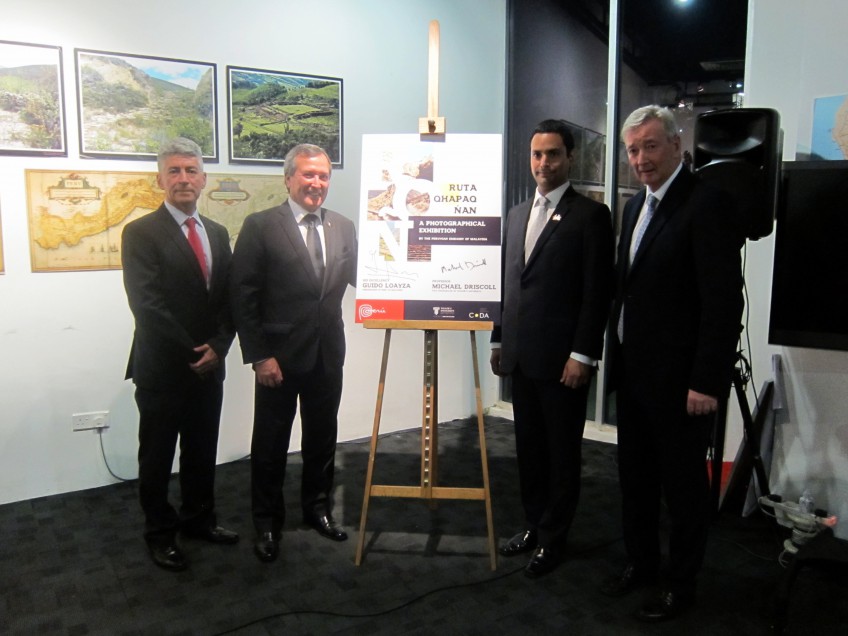
A group photo with His Excellency, Ambassador Guido Loayza (second, left) of the Peru Embassy in Malaysia and Professor Michael Driscoll (furthest right), Vice Chancellor & President, Taylor’s University during the launch of the Qhapaq Nan photography exhibition at CODA Gallery
The Inca Empire was the largest in pre-Columbian America in the early 16th Century and possibly one of the largest of its time. After its downfall, aspects of the Inca culture were destroyed, with a managed few sites remaining to this day. This called for the preservation of one of its notable structures called Ruta Qhapaq Ñan, the backbone of the Inca Empire’s political and economic power – an extensive Inca communication, trade, defense network of roads covering almost 40,000km. In an effort to raise its awareness and heritage, the Peruvian Embassy of Malaysia recently launched a photography exhibition at CODA Gallery, Taylor’s University.
“We are pleased to offer space at Taylor’s University to host an important photography exhibition,” said Professor Michael Driscoll, Vice Chancellor & President of Taylor’s University. “It is an amazing moment and achievement in its history for its engineering feat and beauty. It rakes alongside the pyramids, colosseum and the Stonehenge. We hope that the exhibition will ignite curiosity for visitors to find out more about this heritage, expanding their horizons – even go as far as seeing the landmark for themselves.”
According to His Excellency, Ambassador Guido Loayza of the Peru Embassy in Malaysia, “Qhapaq Ñan is one of the most important heritages in South America. We wanted to pique interest in the Peruvian culture and inspire people to explore and discover Latin America. It is a symbol of strength and currently serves as a sense of identity for their descendants. Through this photography exhibition, it is our hope that the presence and its significance remain alive.”
The road system covers six countries including Argentina, Chile, Ecuador, Bolivia, Peru and Colombia and in 2014, was deemed as one of the UNESCO World Heritage Centre.